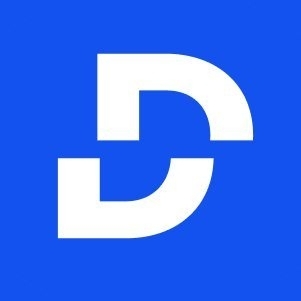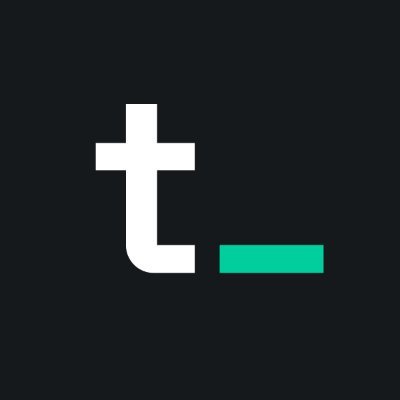Bitget: ¡En el Top 4 por volumen de trading diario global!
Cuota de mercado de BTC63.00%
Nuevos listados en Bitget : Pi
BTC/USDT$104648.21 (+0.32%)Índice de miedo y codicia71(Codicia)
Índice de la temporada de altcoins:0(Temporada de Bitcoin)
Monedas listadas en el pre-mercadoSOONNEWFlujo neto total de ETF en spot de Bitcoin +$667.4M (1d); +$1.6B (7d). Paquete de obsequios de bienvenida para nuevos usuarios por valor de 6.200 USDT.Reclamar ahora
Tradea en cualquier momento y lugar con la app de Bitget. Descargar ahora
Bitget: ¡En el Top 4 por volumen de trading diario global!
Cuota de mercado de BTC63.00%
Nuevos listados en Bitget : Pi
BTC/USDT$104648.21 (+0.32%)Índice de miedo y codicia71(Codicia)
Índice de la temporada de altcoins:0(Temporada de Bitcoin)
Monedas listadas en el pre-mercadoSOONNEWFlujo neto total de ETF en spot de Bitcoin +$667.4M (1d); +$1.6B (7d). Paquete de obsequios de bienvenida para nuevos usuarios por valor de 6.200 USDT.Reclamar ahora
Tradea en cualquier momento y lugar con la app de Bitget. Descargar ahora
Bitget: ¡En el Top 4 por volumen de trading diario global!
Cuota de mercado de BTC63.00%
Nuevos listados en Bitget : Pi
BTC/USDT$104648.21 (+0.32%)Índice de miedo y codicia71(Codicia)
Índice de la temporada de altcoins:0(Temporada de Bitcoin)
Monedas listadas en el pre-mercadoSOONNEWFlujo neto total de ETF en spot de Bitcoin +$667.4M (1d); +$1.6B (7d). Paquete de obsequios de bienvenida para nuevos usuarios por valor de 6.200 USDT.Reclamar ahora
Tradea en cualquier momento y lugar con la app de Bitget. Descargar ahora



Precio de De.FiDEFI
EUR
€0.002982EUR
-8.45%1D
El precio de 1 De.Fi (DEFI) en está valorado en €0.002982 EUR a partir de las 14:57 (UTC) de hoy.
DEFI to EUR converter
DEFI
EUR
1 DEFI = 0.002982 EUR. El precio actual de convertir 1 De.Fi (DEFI) a EUR es 0.002982. Las tasas son solo de referencia. Actualizado hace un momento.
Bitget ofrece las comisiones por transacción más bajas entre las principales plataformas de trading. Cuanto más alto sea tu nivel VIP, más favorables serán las comisiones.
De.Fi price chart (DEFI/EUR)
Última actualización el 2025-05-20 14:57:36(UTC+0)
Capitalización de mercado:--
Capitalización de mercado totalmente diluida:--
Volumen (24h):--
Volumen en 24h/Capitalización de mercado:0.00%
Máximo 24h:€0.004784
Mínimo 24h:€0.002769
Máximo histórico:€0.9346
Mínimo histórico:€0.001544
Suministro circulante:-- DEFI
Suministro total:
0DEFI
Tasa de circulación:0.00%
Suministro máx.:
--DEFI
Precio en BTC:-- BTC
Precio en ETH:-- ETH
Precio en la capitalización de mercado de BTC:
--
Precio en la capitalización de mercado de ETH:
--
Contratos:--
¿Crees que el precio de De.Fi subirá o bajará hoy?
Total de votos:
Subida
0
Bajada
0
Los datos de votación se actualizan cada 24 horas. Reflejan las predicciones de la comunidad sobre la tendencia del precio de De.Fi y no deben considerarse un consejo de inversión.
AI analysis report on De.Fi
Today's crypto market highlightsView report
Precio actual de De.Fi en EUR
The live De.Fi price today is €0.002982 EUR, with a current market cap of €0.00. The De.Fi price is down by 8.45% in the last 24 hours, and the 24-hour trading volume is €0.00. The DEFI/EUR (De.Fi to EUR) conversion rate is updated in real time.
¿Cuánto es 1 De.Fi en ?
A partir de ahora, el precio de 1 De.Fi (DEFI) en está valorado en €0.002982 EUR. Puedes comprar 1 DEFI por €0.002982, o 3353.076246271379 DEFI por €10 ahora. En las últimas 24 horas, el precio más alto de DEFI a EUR fue €0.004784 EUR y el precio más bajo de DEFI a EUR fue €0.002769 EUR.
Historial del precio de De.Fi (EUR)
El precio de De.Fi fluctuó un -96.70% en el último año. El precio más alto de DEFI en EUR en el último año fue de €0.1070 y el precio más bajo de DEFI en EUR en el último año fue de €0.001544.
FechaCambio en el precio (%) Precio más bajo
Precio más bajo Precio más alto
Precio más alto 
 Precio más bajo
Precio más bajo Precio más alto
Precio más alto 
24h-8.45%€0.002769€0.004784
7d-15.37%€0.002317€0.004882
30d+5.33%€0.002743€0.004882
90d-90.93%€0.001544€0.03452
1y-96.70%€0.001544€0.1070
Histórico-99.25%€0.001544(--, Hoy )€0.9346(--, Hoy )
¿Cuál es el precio más alto de De.Fi?
The all-time high (ATH) price of De.Fi in EUR was €0.9346, recorded on . Compared to the De.Fi ATH, the current price of De.Fi is down by 99.68%.
¿Cuál es el precio más bajo de De.Fi?
The all-time low (ATL) price of De.Fi in EUR was €0.001544, recorded on . Compared to the De.Fi ATL, the current price of De.Fi is up by 93.10%.
Predicción de precios de De.Fi
¿Cuál será el precio de DEFI en 2026?
Según el modelo de predicción del rendimiento histórico del precio de DEFI, se prevé que el precio de DEFI alcance los €0.00 en 2026.
¿Cuál será el precio de DEFI en 2031?
En 2031, se espera que el precio de DEFI aumente en un +8.00%. Al final de 2031, se prevé que el precio de DEFI alcance los €0.00, con un ROI acumulado de -100.00%.
Promociones populares
Preguntas frecuentes
¿Cuál es el precio actual de De.Fi?
El precio en tiempo real de De.Fi es €0 por (DEFI/EUR) con una capitalización de mercado actual de €0 EUR. El valor de De.Fi sufre fluctuaciones frecuentes debido a la actividad continua 24/7 en el mercado cripto. El precio actual de De.Fi en tiempo real y sus datos históricos están disponibles en Bitget.
¿Cuál es el volumen de trading de 24 horas de De.Fi?
En las últimas 24 horas, el volumen de trading de De.Fi es de €0.00.
¿Cuál es el máximo histórico de De.Fi?
El máximo histórico de De.Fi es €0.9346. Este máximo histórico es el precio más alto de De.Fi desde su lanzamiento.
¿Puedo comprar De.Fi en Bitget?
Sí, De.Fi está disponible actualmente en el exchange centralizado de Bitget. Para obtener instrucciones más detalladas, consulta nuestra útil guía Cómo comprar de.fi .
¿Puedo obtener un ingreso estable invirtiendo en De.Fi?
Desde luego, Bitget ofrece un plataforma de trading estratégico, con bots de trading inteligentes para automatizar tus trades y obtener ganancias.
¿Dónde puedo comprar De.Fi con la comisión más baja?
Nos complace anunciar que plataforma de trading estratégico ahora está disponible en el exchange de Bitget. Bitget ofrece comisiones de trading y profundidad líderes en la industria para garantizar inversiones rentables para los traders.
De.Fi news
Ver más
Holdings por concentración de De.Fi
Ballenas
Inversores
Minoristas
De.Fi direcciones por tiempo en holding
Holders
Cruisers
Traders
Gráfico de precios de coinInfo.name (12) en tiempo real

Precios mundiales de De.Fi
How much is De.Fi worth right now in other currencies? Last updated: 2025-05-20 14:57:36(UTC+0)
DEFI a MXN
Mexican Peso
Mex$0.06DEFI a GTQGuatemalan Quetzal
Q0.03DEFI a CLPChilean Peso
CLP$3.16DEFI a UGXUgandan Shilling
Sh12.27DEFI a HNLHonduran Lempira
L0.09DEFI a ZARSouth African Rand
R0.06DEFI a TNDTunisian Dinar
د.ت0.01DEFI a IQDIraqi Dinar
ع.د4.4DEFI a TWDNew Taiwan Dollar
NT$0.1DEFI a RSDSerbian Dinar
дин.0.35DEFI a DOPDominican Peso
RD$0.2DEFI a MYRMalaysian Ringgit
RM0.01DEFI a GELGeorgian Lari
₾0.01DEFI a UYUUruguayan Peso
$0.14DEFI a MADMoroccan Dirham
د.م.0.03DEFI a OMROmani Rial
ر.ع.0DEFI a AZNAzerbaijani Manat
₼0.01DEFI a KESKenyan Shilling
Sh0.43DEFI a SEKSwedish Krona
kr0.03DEFI a UAHUkrainian Hryvnia
₴0.14- 1
- 2
- 3
- 4
- 5
Precios de criptomonedas relacionadas
Precio de Shiba Inu EURPrecio de Terra EURPrecio de Smooth Love Potion EURPrecio de Kaspa EURPrecio de dogwifhat EURPrecio de Worldcoin EURPrecio de Ethereum EURPrecio de OFFICIAL TRUMP EURPrecio de XRP EURPrecio de Stellar EURPrecio de Solana EURPrecio de WINkLink EURPrecio de Litecoin EURPrecio de Bitcoin EURPrecio de Fartcoin EURPrecio de Pi EURPrecio de Toncoin EURPrecio de Bonk EURPrecio de Cardano EURPrecio de Pepe EUR
Precios de las monedas recién listadas en Bitget
Nuevos listados
Cómo comprar De.Fi(DEFI)

Crea tu cuenta gratuita en Bitget
Regístrate en Bitget con tu dirección de correo electrónico/número de teléfono móvil y crea una contraseña segura para proteger tu cuenta.

Verifica tu cuenta
Verifica tu identidad ingresando tu información personal y cargando una identificación válida con foto.

Convierte DEFI a EUR
Elige qué criptomonedas tradear en Bitget.
Más informaciónComprar más
¿Dónde puedo comprar De.Fi (DEFI)?
Compra cripto en la app de Bitget
Regístrate en cuestión de minutos para comprar criptomonedas con tarjeta de crédito o transferencia bancaria.
Sección de video: verificación rápida, trading rápido

Cómo completar la verificación de identidad en Bitget y protegerte del fraude
1. Inicia sesión en tu cuenta de Bitget.
2. Si eres nuevo en Bitget, mira nuestro tutorial sobre cómo crear una cuenta.
3. Pasa el cursor por encima del ícono de tu perfil, haz clic en "No verificado" y haz clic en "Verificar".
4. Elige tu país o región emisora y el tipo de ID, y sigue las instrucciones.
5. Selecciona "Verificación por teléfono" o "PC" según tus preferencias.
6. Ingresa tus datos, envía una copia de tu ID y tómate una selfie.
7. Envía tu solicitud, ¡y listo! Habrás completado la verificación de identidad.
Las inversiones en criptomoneda, lo que incluye la compra de De.Fi en línea a través de Bitget, están sujetas al riesgo de mercado. Bitget te ofrece formas fáciles y convenientes de comprar De.Fi, y hacemos todo lo posible por informar exhaustivamente a nuestros usuarios sobre cada criptomoneda que ofrecemos en el exchange. No obstante, no somos responsables de los resultados que puedan surgir de tu compra de De.Fi. Ni esta página ni ninguna parte de la información que incluye deben considerarse respaldos de ninguna criptomoneda en particular.
DEFI to EUR converter
DEFI
EUR
1 DEFI = 0.002982 EUR. El precio actual de convertir 1 De.Fi (DEFI) a EUR es 0.002982. Las tasas son solo de referencia. Actualizado hace un momento.
Bitget ofrece las comisiones por transacción más bajas entre las principales plataformas de trading. Cuanto más alto sea tu nivel VIP, más favorables serán las comisiones.
Recursos de DEFI
Clasificación de De.Fi
Clasificaciones promedio de la comunidad
4.6
Este contenido solo tiene fines informativos.
Bitget Insights

Coinedition
9h
Brickken CEO Edwin Mata on Tokenizing $300M+ in RWAs The Next Chapter for Global Liquidity
Coin Edition sat down for an exclusive chat with Brickken CEO Edwin Mata, where he gave us the lowdown on how they’ve tokenized over $300M in real-world assets and the big impact that’s having on global liquidity.
Edwin also dives into how they’re navigating MiCA, using key partnerships, and tackling unique challenges in today’s evolving RWA market.
1. Brickken has utilized over $300M in assets globally. What is the key factor for this drive? Also, which asset classes are seeing the most demand? Brickken’s $300M+ in tokenized assets stems from our full-stack infrastructure that abstracts blockchain complexity, ensures regulatory alignment, and offers rapid deployment for financial instruments such as equity, debt, and revenue-share models. The surge in demand is concentrated in private equity, real estate-backed instruments, and structured private credit, driven by issuers seeking programmable compliance and operational efficiency in fundraising and investor management.
2. How do you see RWA tokenization reshaping global trading and liquidity in the next 5 years.
Over the next five years, RWA tokenization will redefine cross-border capital markets by introducing 24/7 programmable liquidity, reducing settlement layers, and lowering issuance and compliance costs. The convergence of tokenized securities and DeFi will enable new secondary markets for illiquid assets, fostering global participation and unlocking trillions in idle capital, especially as legal frameworks and institutional infrastructure mature.
3. How does Brickken’s partnership with platforms like Polygon and BNB Chain enhance in scaling tokenized assets and boost adoption? Our integration with BNB Chain and Polygon significantly enhances token scalability by enabling low-cost, high-throughput issuance across EVM-compatible networks. These partnerships also provide access to ecosystem support, liquidity channels, and investor networks, accelerating adoption for both SMEs and large institutions seeking compliant tokenization rails and multichain asset exposure. Additionally, this aligns with our Chainlink CCIP roadmap, enabling cross-chain interoperability and liquidity routing, so that asset issuers can capture capital efficiently across multiple blockchain ecosystems through a single issuance layer.
4. With the upcoming EU’s MiCA regulation, how is Brickken prepared, and what implications do you foresee for the wider tokenization space? Brickken is fully prepared for the regulatory shift accompanying MiCA, despite MiCA not being applicable to securities or financial instruments, which fall under MiFID II. Our core infrastructure is designed to operate within both regimes. For tokenized securities, we maintain alignment with existing EU financial regulations and have tested our models in the European Blockchain Sandbox with 27 regulators. The broader implication is that MiCA will create clear rules for utility tokens and stablecoins, helping delineate regulated perimeters, reduce legal uncertainty, and accelerate adoption. For the tokenization space, this dual-track clarity will encourage institutional entry, especially for platforms that can distinguish between compliant securities tokenization and MiCA-regulated crypto-assets.
5. What unique challenges and opportunities have you encountered in RWA Tokenization? The primary challenge has been regulatory fragmentation, especially when aligning legal frameworks across jurisdictions for asset issuance and investor onboarding. Additionally, the technological landscape remains fragmented, with numerous chains, token standards, and stablecoins lacking interoperability and in many countries still lacking legal certainty. However, each challenge has driven us to become more creative, pushing continuous innovation to align with evolving market conditions. Brickken’s modular architecture allows for local compliance adaptation while delivering standardized issuance infrastructure. With wallet abstraction and Chainlink’s CCIP on our roadmap, we are actively unifying fragmented ecosystems to offer a seamless, compliant tokenization experience across jurisdictions and technologies.
6. You’re participating in Token 2049 Dubai — what key themes or trends are you watching closely, and what does this event mean for Brickken’s global strategy?
Token2049 Dubai is a strategic forum for Brickken to engage with global allocators, regulators, and protocol builders. We’re closely watching themes such as institutional DeFi, modular infrastructure for RWAs, and regulatory convergence across the EU, UAE, and Asia. For Brickken, it is an opportunity to deepen partnerships, enter high-growth jurisdictions, and reinforce our position as a foundational layer for asset tokenization globally. It also enables us to meet prospective clients, understand emerging infrastructure and its rationale, and adopt the relevant know-how to embed within our platform ensuring we maintain the state-of-the-art standard our clients expect.
Disclaimer: The information presented in this article is for informational and educational purposes only. The article does not constitute financial advice or advice of any kind. Coin Edition is not responsible for any losses incurred as a result of the utilization of content, products, or services mentioned. Readers are advised to exercise caution before taking any action related to the company.
CORE-1.97%
BNB-1.06%

Crypto News Flash
11h
Lighthouse Brings Filecoin Power to SingularityNET Devs
When it comes to developing blockchain-based AI applications, one thing that often causes headaches is data storage. Well, now developers in the SingularityNET ecosystem have a more flexible solution.
Through integration with Filecoin via the Lighthouse platform, they can store important files such as metadata and .proto files directly on a decentralized storage network. So, there is no need to rely on traditional storage systems that are very limited and sometimes prone to damage.
Lighthouse itself is not just an ordinary storage place. This platform offers permanent storage with the help of the IPFS protocol which makes data distributed safely and easily accessible.
And what makes it even more interesting, developers can access its API through the Filecoin subscription system—the choices are flexible, according to the capacity of each project. Want a free one to try? Yes. Need a large one for Web3 applications or AI services? Just upgrade.
The current @LighthouseWeb3 integration allows @SingularityNET developers to store key data like metadata and .proto files using Filecoin. API access is granted via a Filecoin subscription model, aligning with their on-demand and cost-efficient storage needs. pic.twitter.com/O3iIRUbCGd
— Filecoin (@Filecoin) May 18, 2025
On the other hand, Filecoin is also not sitting still. They continue to speed up with technological updates. One that is quite curious is Proof of Data Possession (PDP). This technology allows Filecoin to store dynamic data—data that can change at any time, according to CNF .
In the past, this was difficult to achieve on a decentralized storage network. But now, developers can store images, videos, and even active AI models without worrying about the hassle.
Furthermore, on May 5, Filecoin launched its version 25 network upgrade, which they call Teep. One of its flagship features is Fast Finality (F3), which speeds up transaction finalization times by up to 100 times.
What used to take hours now only takes a few minutes. Imagine you’ve just finished uploading a large file to the network, and you don’t have to wait long for confirmation. In addition, the economic system has also been simplified, so storage providers are more comfortable playing here.
However, another interesting highlight came from the launch of a new stablecoin called USDFC on May 13. This stablecoin is backed by the FIL token with a collateralization ratio of 110%. Its main function? Providing USD liquidity directly on the blockchain.
USDFC can be used to pay for services on Lighthouse or even transacted on DeFi platforms like SushiSwap. With annual returns in the range of 8% to 10%, this stablecoin is clearly a special attraction for the Filecoin ecosystem.
Just imagine if all this happened two years ago. Storing .proto files for AI projects could be a big problem. But now? With all the innovations of Filecoin and its collaboration with SingularityNET, everything feels more fluid and open. Not only does it save time and money, but it also provides space for creative ideas to grow without worrying about infrastructure.
Meanwhile, as of the writing time, FIL is trading at about $2.87, down 4.36% over the last 24 hours and 14.61% over the last 7 days.
UP-1.08%

Crypto News Flash
11h
Phantom’s PSOL Hits $8.32M Market Cap with Over 8,600 Holders
Phantom, one of the most popular crypto wallets in the Solana ecosystem, seems to be getting serious about pushing the adoption of liquid staking. Its new product called PSOL—short for Phantom Staked SOL—has now reached a market cap of around $8.32 million and has over 8,600 holders, according to Dune .
Its circulating supply is also impressive, having reached 49,163 PSOL. This figure shows a fairly enthusiastic market response, although there are also other stories behind the scenes that are worth paying attention to.
Just imagine if you could stake SOL and still use your assets for other DeFi activities—yes, that’s the promise of PSOL. This concept is indeed on the rise in the Solana ecosystem, and PSOL is here as a more flexible alternative to traditional staking. This token is designed so that users can still receive staking returns while maintaining liquidity. This is where its main appeal lies.
However, Phantom’s journey over the past few months has not only been about new products and growth figures. On the other hand, CNF previously reported that Phantom has partnered with MoonPay. This integration allows users to buy crypto directly from the Phantom wallet using MoonPay balances, without having to leave the application. For new users, this certainly makes onboarding easier.
Furthermore, there was one rather shocking incident in mid-April 2025. Phantom Technologies Inc. was officially sued in the Southern District Court of New York after a user lost more than $500,000 in Wiener Doge tokens. What is the major allegation? Phantom saved private keys in unencrypted browser memory.
As a result, a hacker was able to gain control using a rogue browser extension. The money was exchanged using the built-in swap feature, and the tokens’ value quickly plunged by about 99%.
If you are an active Phantom user, this case might make you a little worried. Moreover, the lawsuit also accused Phantom of violating the Commodity Exchange Act. Although there has been no final decision, this story clearly tarnished their image which was previously known as a safe and beginner-friendly wallet.
But that doesn’t mean they stopped innovating. In late January, as we previously highlighted , Phantom announced the addition of support for the Sui layer-1 blockchain. This is a complement to the previous networks—Solana, Ethereum, and Polygon. This move could be a sign that Phantom is serious about becoming a versatile multichain wallet.
In fact, on February 26, they also acquired SimpleHash, an NFT data platform that supports over 80 blockchains. This integration gives users real-time access to NFT collections directly from the app.
ACT-4.21%
MAJOR+2.92%

Crypto News Flash
11h
Arbitrum Hits $1.5B Volume Milestone on Uniswap v4
Arbitrum is back in the spotlight after its trading volume on Uniswap version 4 (v4) broke through $1.5 billion . This number shows how often people rely on this Layer-2 network for their daily transactions. Just imagine that in the not too distant future, that volume could approach other large numbers that were previously only owned by Ethereum.
This news comes amid the surge in adoption of Layer-2 solutions, which are indeed becoming the mainstay of many Web3 projects. From lower transaction fees, increased speed, to a much smoother user experience, Arbitrum promises all of that.
Uniswap v4 itself has become a kind of ‘main market’ on Arbitrum, and its growth shows that more and more traders are switching to this ecosystem.
Furthermore, this achievement apparently came hand in hand with various other strategic steps from the Arbitrum ecosystem. On May 14, the blockchain game Legends of Elumia was officially launched on the Arbitrum network.
This game brings great promise to the Web3 gaming sector—if the gaming community is interested and active in it, it is possible that the demand for ARB and ELU tokens will also increase. But yes, it all depends on how much the community wants to get involved. The gaming world is harsh, and only the truly interesting can survive.
On the other hand, CNF also previously reported that Arbitrum DAO has approved an $11.6 million investment into a tokenized US Treasury. The money is divided between three major institutions: Franklin Templeton, Spiko, and WisdomTree. Interesting, because it means that Arbitrum is trying to combine the world of real-world assets with DeFi—two things that previously seemed to run on parallel paths.
Not only that, ApeCoin DAO is also following suit. They launched a special network called ApeChain, built with Arbitrum Orbit technology. They want to have a strong infrastructure, so that it doesn’t happen again like when minting the Otherside NFT which made the Ethereum network ‘cough.’
ApeChain is designed for Web3—NFT, DeFi, and gaming—and uses APE as its fuel. Arbitrum Orbit was chosen because it is flexible, supports custom gas tokens, and its tools make it easy for developers.
Meanwhile, regarding the price of the ARB token, it has indeed fluctuated. However, according to CoinCodex , there is a prediction that its value could break through $0.490 in the next few days—May 22, to be exact.
Even so, it should also be noted that technical indicators are now showing neutral sentiment, and the Fear & Greed index is at 74, aka the “greedy” zone. So, yes, the market is optimistic but remains cautious. Meanwhile, as of press time, ARB is swapped hands at about $0.3756, up 27.61% over the last 30 days.
UP-1.08%
GAS+0.03%

tokenterminal_
14h
ICYMI: ~25 applications control a vast majority of the capital deployed in DeFi.
Additional info on De.Fi
Precio de la ICO
€0.2130 Datos de la ICO
Resumen de la moneda
Relacionado con la moneda
Relacionado con el trading
Actualizaciones de la moneda








